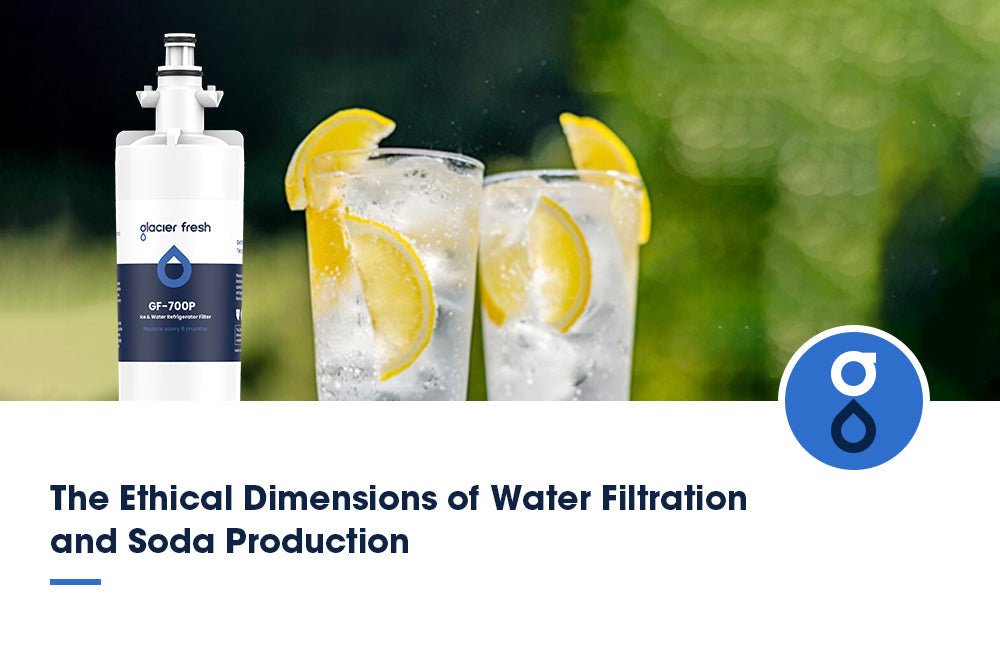Table of Contents:
How long does it take for PFAS to dissolve?
Factors influencing the dissolution of PFAS
Potential environmental impacts
Health and safety concerns on human
Remediation strategies for PFAS dissolved
Policy and regulatory changes on PFAS
Future research and development efforts
FAQs
Conclusion
Have you ever wondered how long it takes for PFAS to dissolve? Well, the rate of dissolution can vary depending on various factors. Factors such as temperature, pH levels, and the presence of other substances can impact how quickly or slowly PFAS dissolves.
How long does it take for PFAS to dissolve?

Due to their unique chemical properties, PFAS can withstand degradation and remain in the environment for extended periods. Remediation techniques are used to address the environmental degradation caused by PFAS. These techniques aim to remove or neutralize the chemicals and restore the affected areas. However, the effectiveness of these techniques can vary depending on factors such as the type and concentration of PFAS and environmental conditions.
To give you a better understanding, here is a table summarizing the time it takes for different PFAS compounds to dissolve:

These timeframes provide a general idea of the rate at which PFAS compounds dissolve. It is important to note that these figures can vary depending on various factors, and further research is needed to fully understand the behavior and degradation of PFAS in different environmental settings.
Factors influencing the dissolution of PFAS
You can expect various factors to influence how PFAS dissolves. Here are three key factors that play a role in determining the time frame and environmental effects of PFAS dissolution:
- Chemical properties: PFAS compounds have unique chemical properties affecting their solubility. Factors such as the length of the carbon chain, the presence of functional groups, and the degree of fluorination can all impact how easily PFAS dissolves in water or other solvents.

- Environmental conditions: The conditions in which PFAS is present can also affect its dissolution. Factors like temperature, pH levels, and the presence of other chemicals can influence the rate at which PFAS breaks down and disperses in the environment.
- Soil and sediment composition: The composition of soil or sediment where PFAS is present can impact its dissolution. Factors like organic matter content, mineral composition, and moisture levels can affect how readily PFAS dissolves and moves through the soil or sediment.

Understanding these factors is crucial in assessing the potential risks associated with PFAS contamination and developing effective remediation strategies. By considering these factors, scientists and environmental professionals can better predict the time frame and potential environmental effects of PFAS dissolution.
Potential environmental impacts
After PFAS is dissolved, there could be potential environmental impacts. These impacts can range from environmental contamination to ecological consequences, which can have long-term effects on the ecosystem.
Here's a breakdown of the potential environmental impacts you should be aware of:
- Environmental contamination: Once PFAS is dissolved, it can contaminate various environmental compartments such as soil, water, and air. This contamination can spread and affect many organisms, including plants, animals, and humans.
- Ecological consequences: The presence of PFAS in the environment can disrupt the delicate balance of ecosystems. It can bioaccumulate in the food chain, accumulating high levels of PFAS in top predators. This can result in reduced biodiversity, as certain species may be more sensitive to PFAS exposure than others.
- Long-term effects: The long-term effects of PFAS contamination are still being researched. However, studies have shown potential links between PFAS exposure and adverse health outcomes in humans and wildlife. These effects can include developmental issues, reproductive problems, and an increased risk of certain diseases.
It's crucial to address and mitigate these potential environmental impacts to protect the health of the ecosystem and the well-being of all living organisms.
Health and safety concerns on human

Here are three key points to consider about PFAS and human exposure:
- Human exposure: PFAS can enter the human body through various pathways, including ingestion of contaminated food and water, inhalation of contaminated air, and dermal contact with products containing PFAS. This means you and your loved ones can be exposed to these harmful chemicals daily.
- Health risks: Studies have linked PFAS exposure to various health issues, including developmental delays in infants and children, decreased fertility, increased cholesterol levels, immune system dysfunction, and an increased risk of certain cancers. These health risks make it crucial to minimize exposure to PFAS as much as possible.
- Mitigation measures: To reduce your exposure to PFAS, it is essential to be informed and take proactive measures. These can include avoiding products that contain PFAS, using certified water filtration systems to remove PFAS, and advocating for stricter regulations on the use and disposal of PFAS.
Remediation strategies for PFAS dissolved
One way to address the issue of PFAS contamination is through implementing effective remediation strategies. These strategies aim to remove or reduce the presence of PFAS in the environment, ensuring a safer and healthier future.
Cost-effective techniques:
- Activated Carbon Filtration: This method uses activated carbon to adsorb PFAS contaminants from water or soil, effectively removing them from the environment.
- Bioremediation: This technique utilizes microorganisms to break down PFAS compounds into less harmful substances, reducing their concentration in the ecosystem.
Monitoring methods:
- Groundwater Sampling: Regular monitoring of groundwater sources can help identify areas with high PFAS contamination levels, allowing for targeted remediation efforts.
- Biomonitoring: By analyzing the levels of PFAS in human or animal tissues, biomonitoring can provide valuable insights into the exposure and potential health risks associated with PFAS.
Treatment technologies:
- Advanced Oxidation Processes: These technologies use powerful oxidants to degrade PFAS compounds, rendering them less harmful.
- Electrochemical oxidation: This method applies an electric current to degrade PFAS compounds, offering a promising solution for their remediation.
Policy and regulatory changes on PFAS

The policy and regulatory changes on PFAS have sparked debates and discussions among experts and stakeholders. These changes are aimed at addressing the environmental and health risks associated with PFAS contamination. Here are three key aspects to consider in the current landscape:
- Policy implementation: Governments at various levels are working to implement stricter regulations and guidelines regarding the use, disposal, and remediation of PFAS. This includes setting limits on PFAS concentrations in drinking water and developing protocols for cleanup efforts.
- Industry compliance: Industries that use PFAS in their products or processes face increased scrutiny and pressure to comply with the new regulations. This involves finding alternative chemicals or methods to reduce or eliminate the use of PFAS and implementing proper disposal practices to prevent further contamination.
- Public awareness: The policy changes have also brought PFAS contamination into the public spotlight, raising awareness about the potential risks and impacts. This increased awareness has led to the government and industries' demands for transparency, accountability, and action.
Overall, the policy and regulatory changes on PFAS are driving efforts to mitigate the risks associated with this class of chemicals. By focusing on policy implementation, industry compliance, and public awareness, stakeholders are strive toward a future where PFAS contamination is effectively addressed and minimized.
Future research and development efforts

Ongoing research and development efforts are focused on finding more sustainable alternatives to PFAS chemicals in various industries. The future is bright with the potential for innovative solutions and technological advancements that can revolutionize how we approach PFAS contamination. Here are some exciting areas of exploration:
Material Science
Scientists are working on developing new materials that have similar properties to PFAS chemicals but are environmentally friendly and non-toxic. Breakthroughs in nanotechnology could lead to advanced materials that can efficiently remove PFAS from contaminated water sources.
Bioremediation
Researchers are investigating using naturally occurring microorganisms to break down PFAS chemicals in soil and water. Genetic engineering techniques may be vital in developing bacteria or enzymes capable of degrading PFAS compounds.
These future innovations hold great promise for tackling the PFAS problem. As scientific breakthroughs unfold, we can look forward to a future where industries can operate without relying on harmful PFAS chemicals. Technological advancements will pave the way for more sustainable alternatives, ensuring a cleaner and safer environment for future generations.
FAQs
Are there any natural processes that can degrade PFAS?
Biological degradation, photocatalytic degradation, and Fenton oxidation are natural processes that can degrade PFAS. These processes break down the chemicals into harmless byproducts, removing them from the environment.
Are any specific industries or areas more susceptible to PFAS contamination?
In specific industries, PFAS contamination can be a concern. Areas at risk of PFAS contamination include those near airports, military bases, and industrial facilities. This contamination can pose risks to public health.
Conclusion
In conclusion, once PFAS is dissolved, it can have potential environmental impacts and health and safety concerns for humans. However, there are remediation strategies available to address this issue. Policy and regulatory changes are also being implemented to prevent further PFAS contamination. Future research and development efforts are crucial to finding more effective solutions. It is important to continue monitoring and addressing the impact of PFAS on our environment and health to ensure a safer and healthier future.
















